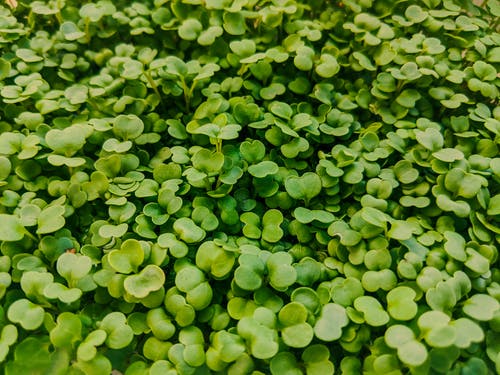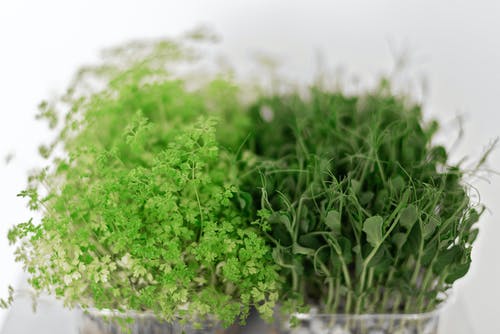Microgreens are packed with high levels of vitamins and minerals and make a great addition to any diet. Besides that a beautiful garnish to any dish. They’re similar to the day-to-day greens you regularly have and are mini-versions of vegetables and herbs.
It’s rare to get pests when you grow microgreens indoors. Plant lice (or aphids), thrips, and whiteflies may find their way to microgreens depending on where you have placed them, inside the house or growing in a greenhouse. These small invaders on your crop may cause the leaves to deform or turn yellow. You can use a floating row cover over the greens if you come across bugs or diseases on your microgreens.

Cause of Pests
Many pest species find warm, humid environments good and they grow well in moist environments. Increasing the temperature and precipitation levels will only help in the rapid increase and spreading of pests.
Pests may invade your microgreens for different reasons such as too much water, too little water, light and heat, use of fertilisers etc., Pests may invade your microgreens if you have placed the trays near to other plants.
Prevention of Pests
It is always better to avoid pests than to get rid of them later. Here are some precautionary measures to safeguard your microgreens
Make sure to not reuse the soil. It may be that there are pests. It is recommended to not use the soil that has been used before for growing microgreens. However you can reuse it for other gardening work.
Ensure to use mediums that are made for microgreens. If you are using soil, use commercially prepared potting soil. Chances are that the soil you take from outdoors can be a source of pests.
While growing microgreens indoors, don’t keep the trays near other household plants. Provide them a good environment for their healthy growth.
To get rid of the unwelcome pests
If your microgreens have already been invaded by the pests, you need to think of ways to eliminate them now. Depending on how badly pests have affected your greens, you may be able to get it cleaned out from the pests.
To eliminate the pests, first you need to get to know about them and then you can learn how to specifically get rid of them from your crops. General approach is to use pesticides but be cautious before spraying them on your microgreens as it may be toxic for consuming them later on.
As mentioned in the preventive measures, if your microgreens are near to other plants there are chances of pests spreading. So it is advisable to move it away from other growth.
Another problem you may face in growing greens is fruit flies and mice. Let’s check how they can cause the problem and how one can deal with it.

Fruit Flies
If the environment is dirty, fruit flies may lay eggs even in your seeds. Also, a dirty environment serves as a good source of food for them and they will reproduce very quickly.
Keep the environment clean and hence make sure to eliminate the source of food of fruit flies. You can use a hydrogen peroxide solution. Take 1 tablespoon of 3% hydrogen peroxide and mix it with 1L of water. Use this solution to spray on your microgreens. This can keep the environment clean and can kill the flies around.
Mice
Mice are meant to destroy seeds and crops. Just like fruit flies, they too find home in a dirty environment. Also if you keep the seed packs on the floor, they will be easily accessible to mice.
Once mice know the area is a source of food for them, they will stay there. So as a preventive measure use mouse traps to stop them from accessing the seeds.
Good ways of storing Microgreen seeds
>Store seeds in closed containers. You can use a metal or a plastic container. If you use bags, it will be easy for mice to access the seeds. Also in order to not get any moisture, it is better to use silica packs.
>Make sure to consistently clean the space.
>Keep the waste away from the grow area.
>The temperature range for storing the seeds is between 12.7°C to 21.1°C to prevent germination. Keeping a constant temperature in this range will help in reducing the moisture level. Make use of a moisture meter to keep track of the moisture level.
If stored properly, most peas, beans and lentil seeds can be stored for about 5 years. Grain seeds can be kept up for 3 years and leafy veg seeds generally remain good for 4 years.


